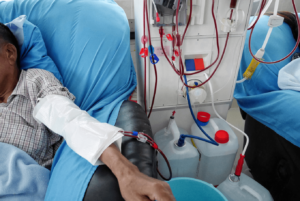
A fever is an increase in temperature to 37.8°C or more. If your child is feverish you can give them paracetamol every four hours as first aid; just make sure you give the right dosage based on their weight.
However, according to Dr. Cheryl Senal, a pediatrician at Westlake Medical Center, if your child is burning with fever and had a seizure, you should start gathering information like their past medical history, family’s history of seizures with or without fever, and the symptoms they show when feverish.
“These are red flags,” Dr. Senal says. “These are the questions that must be answered, so it’s best to take your baby to their pediatrician, especially if they continue to have a fever and recurrent seizures.”
Treating uncontrolled seizures
There is what we call febrile seizure among children, a condition when an uncontrollable fever triggers a convulsive episode, Dr. Senal says.
Usually, kids who have it have a history of febrile seizures in their family. Examination and tests on the child must be done to find out if the diagnosis is correct and to properly treat the condition. These tests will help determine if seizure disorder, meningitis, or encephalitis are to be ruled out.
Your baby would also need to undergo a stool exam if they’re having diarrhea for two weeks. The exam will determine if your child is suffering from chronic diarrhea and needs to take antibiotics and be hydrated.
Record it down
Dr. Senal suggests that you keep a record or a notebook where you can write down the date and time when your baby had a fever, and their temperature. With that information, pediatricians can see the baby’s fever pattern and narrow down the possible cause of their ailment.
“Some of these causes could be Urinary Tract Infection, blood infection or sepsis, ear infection or otitis media, skin disease or impetigo, childhood tuberculosis or primary complex, or rheumatic diseases,” she points out.
“So it’s best to have your baby checked especially if their fever is recurring.”
If your child has a fever and their condition seems to be not getting any better, you can visit Westlake Medical Center. To get expert medical advice regularly, follow Westlake Medical Center at https://www.facebook.com/WestlakeMedCenterPH/ and https://www.tiktok.com/@wmctiktok.












